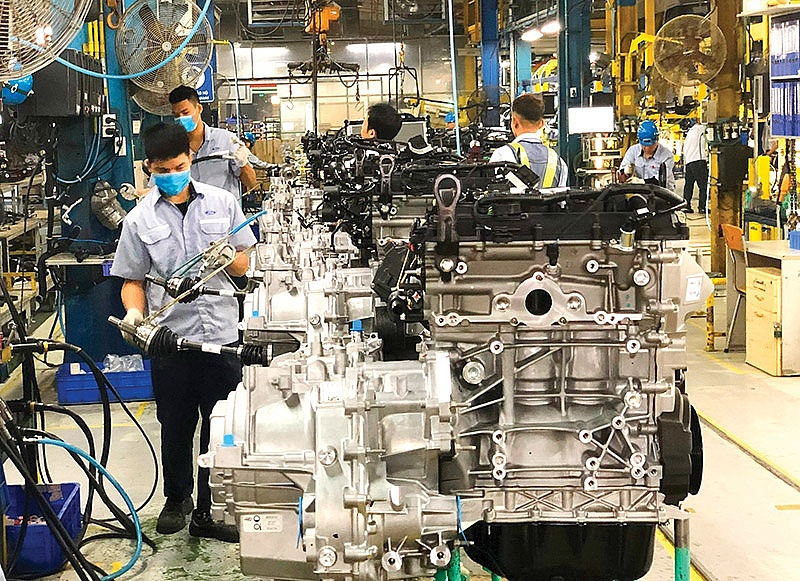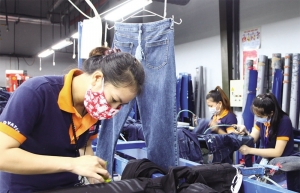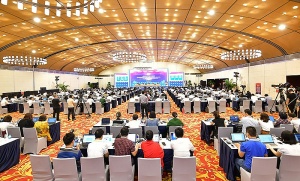Strong economic fundamentals are key to fast recovery in Vietnam
 |
Asian Development Bank (ADB) country director for Vietnam Andrew Jeffries said, “Vietnam’s economy recovered faster than expected in the first half of 2022 and continues to grow amid the challenging global environment.”
“The steady recovery was supported by strong economic fundamentals and driven by a faster-than-expected bounce back of manufacturing and services,” added Jeffries.
The Asian Development Outlook (ADO) Update 2022 released on September 21 states that Vietnam’s economy is performing reasonably well amid uncertainties in the global economy. Restored global food supply chains will boost agricultural production this year, but high input costs will still constrain the recovery of the agriculture sector.
Softening global demand has slowed manufacturing. The manufacturing purchasing managers’ index in August softened to 52.7 from 54.0 in June. However, the outlook for the manufacturing sector remains bullish given strong foreign direct investments in the sector.
Fully normalised domestic mobility and the lifting of travel restrictions for foreign visitors will support a robust rebound in tourism in the second half of the year, driving the growth of the services sector.
Increasing inflation in the United States and the European Union has heightened inflationary pressure in the country. However, Vietnam’s prudent monetary policy and effective price controls – especially for gasoline – should keep inflation in check at 3.8 per cent in 2022 and 4.0 per cent in 2023 – unchanged from the projection made in April’s Asian Development Outlook.
The country’s economic outlook continues to face heightened risks. The global economic slowdown could weigh on Vietnam’s exports and the labour shortage is expected to dent the fast recovery of the services and labour-intensive export sectors in 2022.
Despite this, the ADB has maintained its favourable economic outlook for Vietnam as it forecasts gross domestic product to expand by 6.5 per cent in 2022 and 6.7 per cent in 2023.
However, the ADB also warned that Vietnam's economic outlook will continue to face increasing risks. In the view of ADB's chief economist Nguyen Minh Cuong, despite the strong increase in exports, Vietnam's economy could see some dark clouds.
In the first eight months of the year, thanks to the recovery of economic activities and a stable exchange rate, exports reached $250.8 billion, up 17.1 per cent on-year. The recovery of domestic production led imports to increase by 13.6 per cent, reaching $246.8 billion – enabling the trade surplus to reach $4 billion.
| “The steady recovery was supported by strong economic fundamentals and driven by a faster-than-expected bounce back of manufacturing and services,” said ADB country director for Vietnam Andrew Jeffries. |
However, the global economic slowdown could hit exports harder than forecast, which would worsen the current account balance.
The ADO reports that weaker demand in the world market causes exports to slow down. The devaluation of the Vietnamese dong makes imports more expensive than exports, which is expected to lead to a trade deficit this year.
Cuong said that in August, the number of orders in Vietnam decreased. In particular, the number of orders from South Korea and Taiwan fell, and some other markets are following. The ADB said that this is not surprising, especially in the context of the US Federal Reserve raising interest rates.
Previously, HSBC has also warned about the early signs that demand for many electronic items is weakening. Securities company VnDirect said that Vietnam's export growth may slow down in the last three months of the year because of tightening global financial conditions and world supply chain disruptions, leading to weak demand for Vietnam's export goods.
Besides exports, Vietnam's economy also faces high inflation risks. While aggressive interest rate hikes by central banks in major economies have helped ease upward pressure on global prices, increasing global geopolitical uncertainty could push commodity prices higher.
In addition, the pandemic could re-emerge, which would be an issue if the health system is not ready because of the resignation of medical staff and a shortage of medicines and medical equipment. The labour shortage could hinder the rapid recovery of the service sector and labour-intensive export sectors in 2022.
The slow delivery of planned public investment and social spending, especially the implementation of the government’s Economic Recovery and Development Programme, could slow growth this year and the next, reported the ADB.
 National efforts for business recovery National efforts for business recovery |
 ASEAN on track for sustainable recovery post-COVID ASEAN on track for sustainable recovery post-COVID |
 Reinforcing macroeconomic foundations to promote sustainable recovery and development Reinforcing macroeconomic foundations to promote sustainable recovery and development |
What the stars mean:
★ Poor ★ ★ Promising ★★★ Good ★★★★ Very good ★★★★★ Exceptional
Related Contents
Latest News
More News
- Two national hospitals expand capacity with new facilities (December 20, 2025 | 09:00)
- Ha Tinh breaks ground on major Vingroup industrial and energy projects (December 19, 2025 | 18:24)
- EVN launches major power infrastructure projects nationwide (December 19, 2025 | 18:17)
- VAL inaugurates second production line to meet domestic animal feed demand (December 19, 2025 | 16:37)
- Sun Group pioneers urban tram system in Phu Quoc (December 19, 2025 | 15:00)
- Seven major projects launched to drive Hanoi’s next growth phase (December 19, 2025 | 14:00)
- Securing capital and efficiency for Vietnam’s 2026-2030 growth ambitions (December 17, 2025 | 10:00)
- Vietnam bucking trend in the global M&A landscape (December 16, 2025 | 14:20)
- HDS Summit spotlights Vietnam’s rising role in regional supply chains (December 16, 2025 | 08:00)
- Kolon signs $48 million airbag supply deal with Autoliv (December 15, 2025 | 18:14)

 Tag:
Tag:



























 Mobile Version
Mobile Version